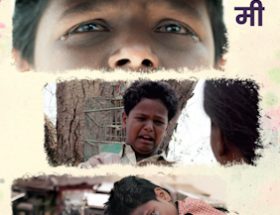Naveen (Nijam) Gara
There is still more than a year left for the next general election in 2024. However, if purported surveys are to be believed, Mr Narendra Modi is set to storm back to power comfortably. Setting the validity of these surveys aside, does the current dispensation deserve to be voted back? While there may be several contradictory arguments surrounding this question, there are 3 major issues under Mr Modi’s reign since he took office for the second term as Prime Minister in 2019 that would sum up this government’s attitude towards people and its priorities. These issues epitomize his approach to governance and that should be the bar against which he should be judged.
First, the heartless COVID lockdown takes the prize for being stone deaf to the suffering of the millions of working class people. Most countries in the world locked down but Mr Modi stood apart in adding the shock and awe component to it as he hoisted his version of lockdown on March 23, 2020. A blanket shutdown of mass transportation in a country of 1.4 billion within a matter of few hours smacks of utter arrogance and nonchalance to the day-to-day travails of the people who serve the country with their sweat and blood. The visuals of millions of urban poor walking for thousands of kilometers to reach their homes was no less than a mass migration provoked by war or famine. Worse yet, these hapless individuals were dehumanized at state borders and hitherto unheard of “village borders”.
A society that practiced untouchability for thousands of years exuberantly doubled up on inhuman practices. Migrants were stripped, sprayed upon by “sanitizing” chemicals and even beaten by police in several instances. There is no reliable estimate of how many people died solely as a consequence of these heartless measures but that number would include wayside deaths while walking on concrete highways, hunger deaths due to closure of all businesses, medical deaths due to unavailability of ambulances, etc. One report pegs this number close to a thousand deaths while admitting that this is a vast undercount of actual casualties. While this untold misery was unfolding itself in the summer of 2020, the supreme leader remained unmoved and unfazed. No amends were made in time to get help to the impoverished millions stranded on highways when they most needed it. He exhorted the nation to bang pots and pans from rooftops but did not even acknowledge these deaths that were completely preventable and squarely attributable to his dictatorial style.
The second issue that exemplifies the numero uno leader’s approach towards another segment of India’s working class is the Farmers’ agitation of 2020-2021. This time it was the share of rural working class to bear his brunt. Mr Modi’s government showed alarming alacrity in getting the three infamous farm bills bulldozed through the Parliament in September 2020. Farmers across the nation took to the streets with matching swiftness right after that. Punjab’s farmers stood at the forefront of this agitation and brought the national capital to a standstill with hundreds of thousands of them staging sit-ins on the roads leading up to New Delhi for months together.
The movement’s impact was felt across the globe with some considering it to be the largest protest in human history. Scores of men, women and even children actively participated in an agitation of a lifetime. The central government left no stone unturned to thwart such a popular agitation. Farmers were labeled as separatists, anti-nationals and whatever came to the minds of frustrated and shell-shocked Modi bhakts. Police resorted to caning, shelling with tear-gas, water cannons and kicking with batons with no regard to age or gender of the protesting individuals. The spirit of the farmers remained unshaken. Finally, after more than a year of pitched battle, the farmers of the land were able to achieve the unthinkable- the mighty Modi himself had to announce a repeal of the farm laws in November 2021 with elections to Punjab and Uttar Pradesh in sight. This did not come without a human toll. According to an estimate, more than 700 protesting farmers died in that 1-year period due to several reasons including police brutality, extreme weather with nail-biting cold in North India, lack of proper medical care, etc. Yet the man at the helm did not bat an eyelid during those 14 long months in respect of the lives lost. Again, the theme of a Prime Minister who is unperturbed by the avoidable loss of life manifests itself writ large for anyone who has the heart to observe it.
The third issue that drives home the indifferent attitude of this popular leader is his mockery of welfare schemes in the name of “Revdi” culture. He breathed fire on “freebies” that would refer to measures such as free power to farmers, free means of transportation to disadvantaged students, free meals or ration to the poor, etc. The spellbindingly eloquent Tamil Nadu Finance Minister PTR (MrPalanivel Thiagarajan) gave several rounds of befitting replies in this regard clearly demarcating the fundamental distinction between a steadfast welfare state and a crony capitalist state that ignores basic needs of its population. He proved with impeccable data to back up his claims that Tamil Nadu, a quintessential welfare state stands among the top in most meaningful criteria such as the human development index, literacy rate, infant mortality rate, etc. He even quoted studies conducted by reputable international universities on how provision of a “freebie” such as a Television set to the rural poor gave them respect, helped them gain knowledge and even reduced rates of domestic abuse. The self-proclaimed chowkidar of India pays no heed to such transformative welfare success stories but rather scornfully diminishes their role as in the case of MGNREGA (Mahatma Gandhi National Rural Employment Guarantee Act) which he described as a “living monument of failure” of the previous government.
In essence, these three issues starkly bring out the man behind the rhetoric and brouhaha that is Modi. While claiming to be a humble servant of “Janata Janardhan”, he has shown an abject lack of sensitivity and a criminal disdain for the poor in all these three instances. Hence, the country has to ask itself if such a leader and regime deserves another chance. If endowed with a hat-trick, the people are surely going to be “topi pehnao-ed” once again, to use the term recently popularized by the vociferous and inimitable MP from West Bengal, Ms Mahua Moitra. With income inequality in the country already at an obscene level with a gap that was astronomically widened just in the last 3 years, another Modi stint will perhaps take it to an irreversible level after which there might be no recourse.
~~~
Naveen (Nijam) Gara, a Telugu from Hyderabad, is a physician currently practicing in the USA. His articles are devoted towards voicing the concerns of downtrodden and marginalized communities..









